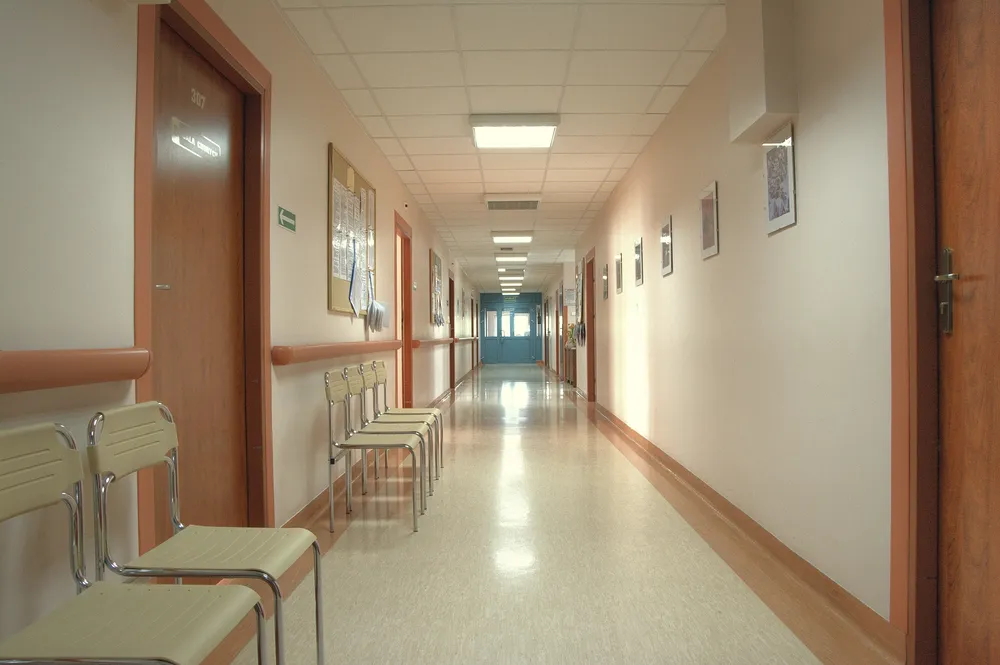Could Medicaid Expansion, Rural Incentives Reduce Labor Shortage?
Final report by Governor’s Task Force on Healthcare Workforce offers recommendations.
Wisconsin could shore up its health care workforce by expanding Medicaid, reducing barriers to training and incentivizing working in underserved communities, according to a new state report.
This week, the Governor’s Task Force on the Healthcare Workforce released its final report, which includes a list of 10 broad policy recommendations and 26 related action items aimed at addressing labor shortages in the health care industry.
Hospitals and health systems have been combating workforce shortages since the COVID-19 pandemic. A 2024 report from the Wisconsin Hospital Association found that staffing vacancy rates between September 2021 and September 2022 were roughly 10 percent. That’s up from 5.3 percent in 2020.
On a call with reporters Monday, Lt. Gov. Sara Rodriguez, a former nurse who chaired the task force, said Wisconsin is expected to be short roughly 20,000 nurses by 2040. She said other positions like licensed practical nurses, surgical techs and other support roles are also expected to face shortages.
“COVID really did exacerbate the problem,” she said. “People were retiring and burning out at higher rates than they were before.”
In January, Gov. Tony Evers signed an executive order creating a task force to study the obstacles facing Wisconsin’s health care system and identify ways to improve patient care and address workforce shortages. Some of the report’s recommendations could be included in Evers’ next biennial state budget proposal.
The 25-member task force included state agency leaders, nurses, certified nursing assistants, pharmacists, dentists, mental health providers, hospital leaders, academic leaders and independent physicians.
“What I really feel was well done with this task force was the representation from all different parts of health care,” said Dr. Wendy Molaska, past president of the Wisconsin Medical Society who owns her own clinic in Fitchburg. “I think (that) was really important to understanding the health care workforce issues because it’s all related and intertwined.”
The policy proposals in the report center around improving access to education, expanding hands-on training opportunities, supporting the health care workforce and boosting funding to providers.
Medicaid expansion could boost workforce, increase reimbursement
On the funding end, the report recommends adopting Medicaid expansion to help fund workforce initiatives, as well as increasing reimbursement rates, both from Medicaid and private insurance, for behavioral health and community-focused providers.
Wisconsin is one of just 10 states that have not adopted Medicaid expansion under a provision in the Affordable Care Act. The expansion would give coverage to Wisconsinites making up to 138 percent of the federal poverty level.
The report says taking Medicaid expansion would save the state roughly $1.6 billion in state funds over two years that could be used for “strategic workforce initiatives,” as well as allow low-wage health care workers to take more hours without losing their benefits.
State Department of Health Services Secretary Kirsten Johnson, who served on the task force, told reporters Monday that Medicaid expansion would’ve helped “dampen the losses” that led Hospital Sisters Health System to close two hospitals and a network of clinics in western Wisconsin.
“If a CNA were to be covered by Medicaid, or may already be covered by Medicaid, they could potentially work eight to nine hours more a week, so a full day of additional care that could be provided by an individual, and they could still maintain their Medicaid coverage,” she said. “We do have many working adults in Wisconsin who are covered by Medicaid who would benefit.”
The report also says lower insurance reimbursement rates can translate to lower wages for workers, which can worsen workforce shortages and reduce access to care.
Ann Zenk, senior vice president of workforce and clinical practice for the Wisconsin Hospital Association, said costs have risen on the provider side and reimbursement rates haven’t kept up.
“The workforce costs, supply costs are increasing at a much faster rate even than general inflation, and reimbursement also hasn’t caught up,” she said.
Reducing barriers to training, increased support for rural providers recommended
To reduce barriers to entering the health care field, the report recommends funding wraparound services programs — like transportation or child care — for students, reducing the cost of high school equivalency, or GED, training and tests and boosting state funding to grant programs that go to training rural health care workers.
“The wraparound services certainly could be useful for anyone in the health care workforce, but I think were particularly important for people that may not have the support structures or the financial means to deal with acute issues,” said Dr. John Raymond, president and CEO of the Medical College of Wisconsin, who served on the task force.
For example, Molaska said certified nursing assistants make roughly the same amount of money as low-wage service industry workers, but there’s more costs and education associated with becoming a CNA.
“If you’re trying to choose between going to school to get a CNA certificate or first you need your GED, you don’t necessarily have the money for that,” she said. “You can work at McDonald’s without a GED and without a CNA certificate. I think sometimes what doesn’t seem like a lot of money for some people is a lot of money for others.”
The report also recommended boosting funding and allowing for more flexibility for the Allied Health Professional Education and Training Grant and the Advanced Practice Clinician Training Grant programs, both of which support training rural nurses and physician assistants.
Zenk said state support for those programs was increased in the last state budget, but there’s still a lot of administrative red tape for health systems and hospitals applying for those programs.
“The challenge is,” she said, “how can we streamline? How can the Department of Health Services streamline the process so that hospitals, health systems and their partners in education can, within the biennium, spend the dollars they’ve been awarded?”
Raymond also said providing support to rural health care providers is critical because rural residents often lack access to primary and specialized care.
“Finding ways to incentivize people to live, work and serve in rural communities is really essential,” he said. “There’s just a huge acute shortage of individuals in rural areas, so these are, I think, really, really important recommendations.”
While task force members endorsed the ideas presented in the report, some recommendations, like Medicaid expansion, would have an uphill battle in the state Legislature.
But Raymond and Molaska said they believed the proposals included in the report were nonpartisan.
“Hopefully, the recommendations will be viewed as nonpartisan because there were people from all stripes that were really trying to work together to help make health care better here in Wisconsin,” Raymond said. “We really all were there trying to make patient care and our outcomes here in Wisconsin the best in the country.”
Report: Medicaid expansion, incentives for rural care could address workforce challenge was originally published by Wisconsin Public Radio.
If you think stories like this are important, become a member of Urban Milwaukee and help support real, independent journalism. Plus you get some cool added benefits.




















